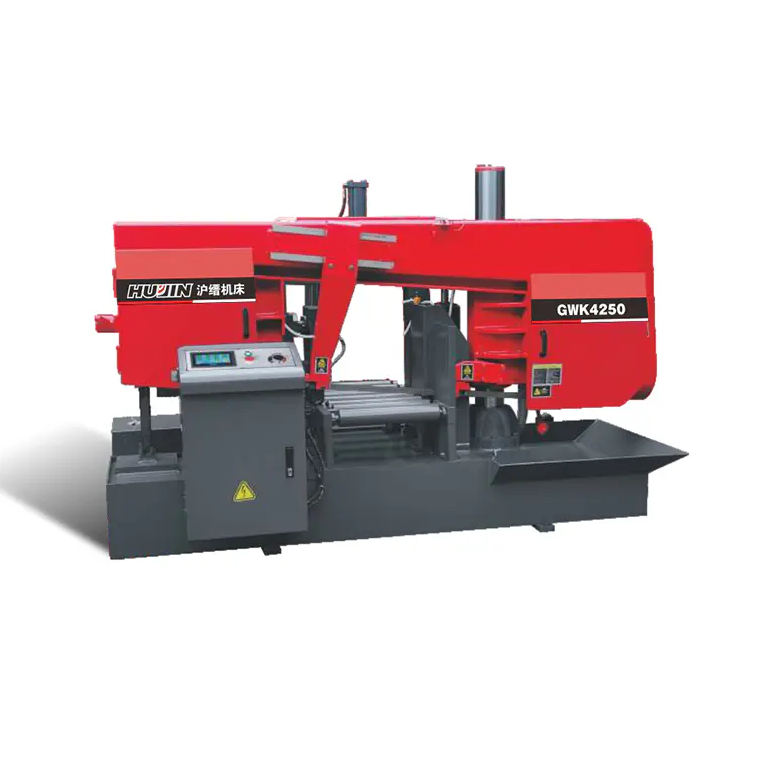Vibration during the cutting process of a Horizontal Band Saw Machine is a common challenge that can negatively affect both the quality of the cut and the longevity of the equipment. Excessive vibration leads to uneven cuts, faster blade wear, increased noise, and operator discomfort. Reducing this vibration is essential to ensure smooth operation, enhance precision, and extend the service life of the machine. Achieving this involves addressing multiple factors, including machine design, blade condition, material handling, and operational parameters.
One of the primary contributors to vibration is the condition and tension of the saw blade itself. If the blade is worn, dull, or improperly tensioned, it can cause irregular movement as it passes through the workpiece. This leads to chatter, which manifests as vibrations throughout the machine frame. Maintaining proper blade tension is crucial, as a blade that is too loose will flap and vibrate, while an overly tight blade can strain the machine’s components and still cause unwanted oscillations. Regular inspection and timely replacement of blades also help prevent vibration caused by damage or uneven wear.
The type and quality of the blade also influence vibration. Choosing the correct blade for the material being cut is vital. Blades with inappropriate tooth geometry, pitch, or hardness may struggle to cut cleanly, resulting in excessive force fluctuations and vibrations. For example, cutting harder materials requires blades designed with specific tooth designs that reduce friction and distribute cutting forces more evenly. Matching the blade to the job reduces the stress on both the blade and the machine, which in turn minimizes vibration.
Machine rigidity is another key factor. A robust frame and stable mounting of components reduce the transmission of vibration. A Horizontal Band Saw Machine with a solid, well-engineered structure resists oscillations better and provides a more stable cutting environment. Loose bolts, worn bearings, or misaligned guides can amplify vibration. Regular maintenance to tighten connections, lubricate moving parts, and align the blade guides ensures that the machine operates smoothly and vibrations are kept to a minimum.
The method of securing the workpiece also affects vibration levels. If the material is not firmly clamped, it can shift or move during cutting, causing irregular forces and increased vibration. Properly designed vises or clamps that hold the workpiece securely reduce movement and stabilize the cutting process. Additionally, supporting long or heavy workpieces adequately with roller beds or stands prevents sagging and reduces stress on the blade, further lowering vibration.
Cutting speed and feed rate should be optimized to reduce vibration as well. Operating the machine at too high a speed or feeding the material too aggressively can cause the blade to chatter. Conversely, cutting too slowly may also create an unstable cutting environment. Modern Horizontal Band Saw Machines often include variable speed drives and programmable feed controls, allowing operators to find the ideal balance for each job. Careful tuning of these parameters based on the material and blade type significantly reduces vibration.
Finally, the use of coolant or cutting fluid can help dampen vibrations by lubricating the blade and workpiece interface. Coolant reduces heat and friction, leading to smoother blade motion and fewer vibrations. It also assists in flushing away chips that might otherwise cause the blade to bind or vibrate.
In summary, reducing vibration during cutting on a Horizontal Band Saw Machine involves a comprehensive approach: maintaining proper blade condition and tension, choosing the correct blade for the material, ensuring machine rigidity and precise alignment, securely clamping the workpiece, optimizing cutting parameters, and using coolant effectively. By addressing these areas, operators can achieve smoother cuts, longer blade life, and a safer, more comfortable working environment.
